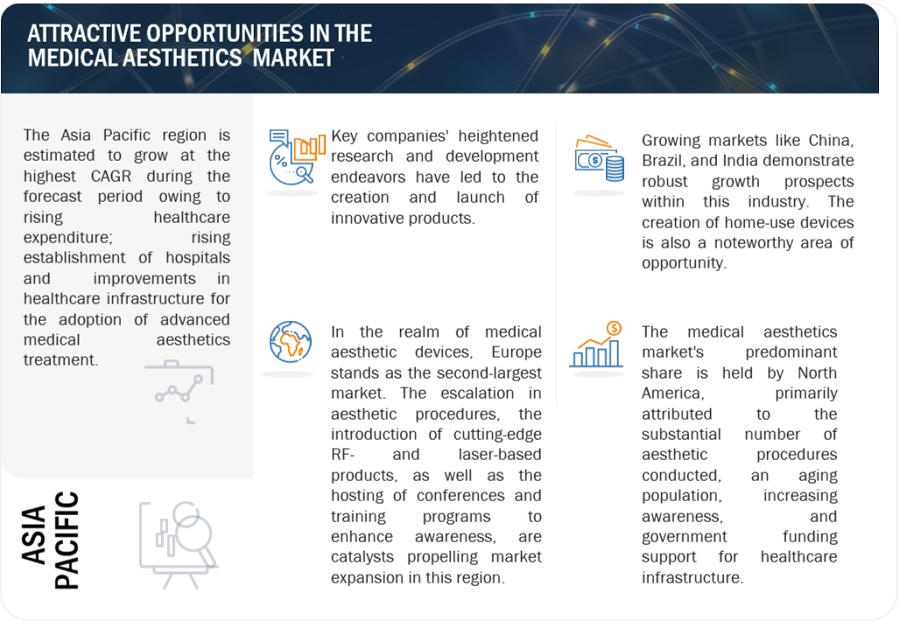The medical aesthetics market is projected to reach USD 17.07 billion by 2023 from USD 10.30 billion in 2018, at a CAGR of 10.6%.
Growth in this market is mainly driven by the growing adoption of minimally invasive and noninvasive aesthetic procedures, rising adoption among geriatric individuals, increasing public awareness about cosmetic procedures, the availability of technologically advanced & user-friendly products, and the increasing demand for aesthetic treatments among men.
Download FREE Brochure @ https://www.marketsandmarkets.com/pdfdownload.asp?id=885
The global medical aesthetics market is segmented on the basis of product, end user, and region.
On the basis of products, the medical aesthetics market is segmented into body contouring devices, cosmetic implants, facial aesthetic products, tattoo removal devices, physician-dispensed cosmeceuticals & skin lighteners, physician-dispensed eyelash products, thread lift products, skin aesthetic devices, hair removal devices, light therapy devices, and nail treatment laser devices. The thread lift products segment is expected to register the highest growth rate during the forecast period. The high growth of this segment is primarily attributed to the growing focus on aesthetics and increasing consumer willingness to pay for aesthetic treatments.
The facial aesthetic products segment is expected to account for the largest share of the medical aesthetics market in 2018. The market for facial aesthetics products is further subsegmented into botulinum toxin, dermal fillers, microdermabrasion, and chemical peels. The botulinum toxin segment is expected to witness the highest CAGR during the forecast period. The increasing number of botulinum toxin procedures due to the growing awareness and the rising willingness amongst people to undergo this procedure is the major factor driving the growth of this market segment.

On the basis of end user, the medical aesthetics market is segmented into clinics, hospitals, and medical spas; beauty centers; and home care. The clinics, hospitals, and medical spas segment is estimated to witness the highest growth during the forecast period. The growth in this segment is attributed to the increasing number of clinics and medical spas and the availability of financial and infrastructure resources with hospitals (including technologically advanced devices, trained staff, and skilled professionals to perform aesthetic procedures).
Geographically, the Asia Pacific market is expected to witness the highest growth rate from 2018 to 2023. Some of the key factors driving the growth of the medical aesthetics market in the APAC are the increasing purchasing power and the growing middle-class population, growing preference for aesthetic surgeries, the emergence of new products, and increasing consumer acceptance of advanced procedures. Over the past three years, a number of market companies, including Cynosure, Inc. (US), DEKA Laser (Italy), Syneron Medical Ltd. (Israel), Allergan, Inc. (Ireland), and Galderma S.A. (Switzerland) have strategically expanded their presence in emerging APAC countries (including China, South Korea, India, Taiwan, and Singapore) to leverage the high growth potential in this region.
The global medical aesthetics market has witnessed the launch of several low-cost, home-use aesthetic devices. These affordable and home-use products result in reduced overall treatment and improve customer comfort. The growing availability of low-cost medical aesthetic devices and growing adoption of home-use aesthetic devices are expected to offer high-growth opportunities to the emerging as well as prominent product manufacturers.


